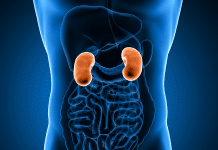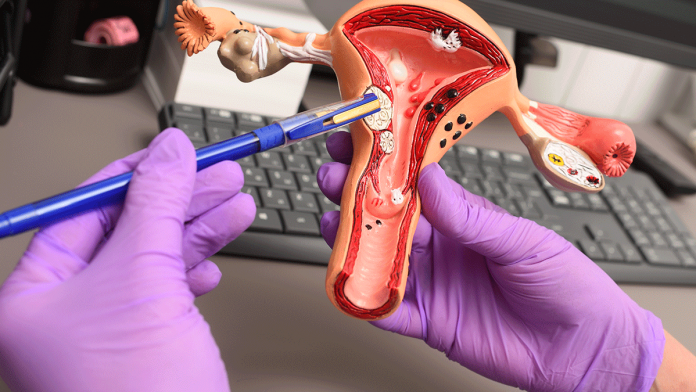Adenomyosis is a disorder in which tissue lining the uterus grows out in the muscle wall of the uterus. It results in the enlargement of the uterus. The grown tissue normally works i.e., grows, breaks, and bleeds during each menstrual cycle but can cause abdominal pain, heavy periods, and bloating.
Adenomyosis is the combination of three words i.e., adeno meaning gland, myo meaning muscle, and osis meaning condition. The condition is not dangerous but can affect the everyday routine of women suffering.
Symptoms are not very severe but adenomyosis can cause heavy menstrual bleeding, painful periods, abdominal bloating and pressure, etc.
The cause of the disease remains unknown, but researches show that it resolves after menopause. But for the women whose daily routine is affected by the disease, hormonal treatments are available and offer great help. Certain hormones like estrogen, prolactin, progesterone, etc. may be the triggering agents for adenomyosis.
No time to read? Watch this video…
Certain risk factors can contribute to the development of adenomyosis e.g., childbirth, any history of uterine surgery such as C-section, etc. Middle age is the most common risk factor, as most cases of adenomyosis appear in ages the 40s and 50s. Newer researches show that younger women are at higher risk of developing adenomyosis.
Until now, the diagnostic criteria of adenomyosis were to perform a hysterectomy and analyze under a microscope. But now, imaging techniques have made it a lot easier as they do not require invasive procedures. Transvaginal ultrasounds and MRIs can be performed to study the disease characteristics of the uterus.
If adenomyosis is suspected, the first step will be a physical examination. The doctor will take a physical exam of your pelvic region to diagnose the enlargement or inflammation of the uterus, and either the uterus is tender to touch or not. Further, ultrasound may be performed to rule out other conditions as ultrasounds cannot accurately diagnose adenomyosis. MRIs can confirm the disease.
Usually, the symptoms are very common and vague, so they are confused with uterine fibroids. Both are benign (noncancerous), but the two conditions are not the same at all. The right strategy will lead to an accurate diagnosis of the disease.
Many women who suffer from adenomyosis are at risk of developing endometriosis. Some studies show that women with this disease may develop infertility.
Treatments are available but depend on the condition and severity of your disease and symptoms. Mild symptoms may be treated with over the counter medicines or by using hot packs for cramps.
Heavy bleeding in periods can be managed with hormonal therapy. In this therapy, the medications are inserted into the uterus. In patients where adenomyosis hasn’t progressed enough, a technique called endometrial ablation can be used. It is a minimally invasive procedure that destroys the lining of the uterus to relieve symptoms.
All the procedures we discussed in this video will only help in managing your disease and will not cure it completely. The only cure for adenomyosis is hysterectomy (removal of the uterus) for women having significant symptoms.
Some lifestyle changes and home remedies may also help in relieving your symptoms. While having menstrual cramps, try soaking in a warm bath. Use a heating pad for your abdomen to relax and reduce pain.
Remember that adenomyosis is not life-threatening and can be taken care of easily.
Until Next Time,
Team Doctor ASKY!




















